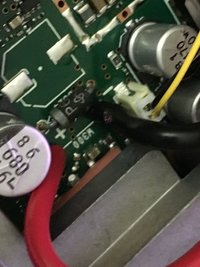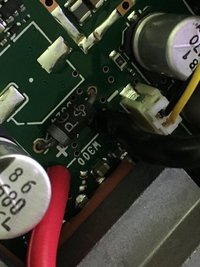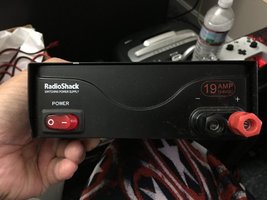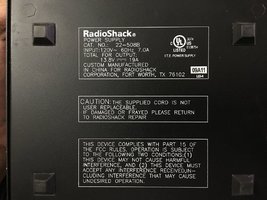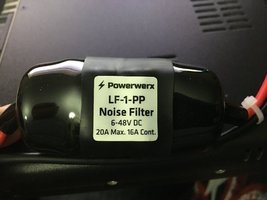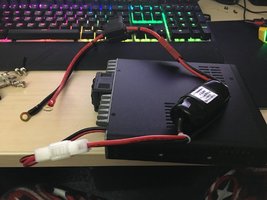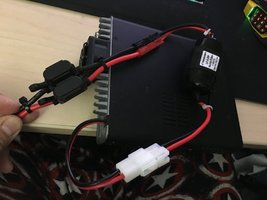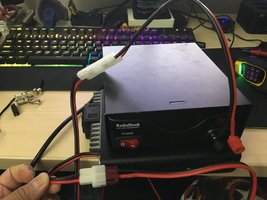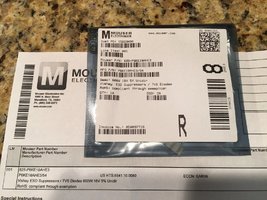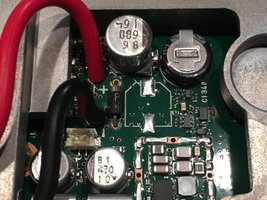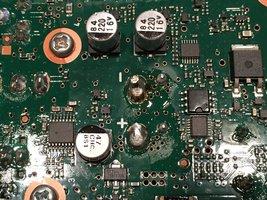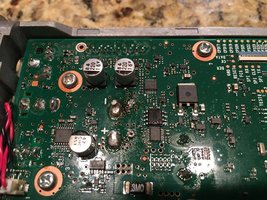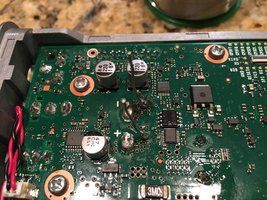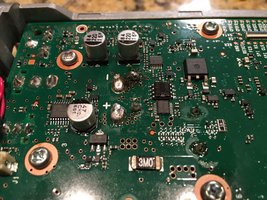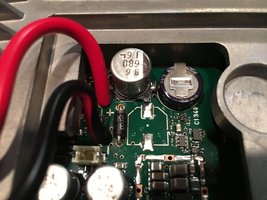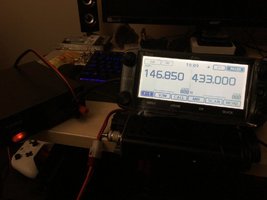lazypengu1n
NES Member
Preface
Purchased an ICOM ID-5100A and was testing and figuring out the wiring. I have an 12V AC to DC convertor 19.3AMPs Max 12V. I had this connected via 10G wires to a Anderson Powerpole 8 way splitter then to Power Filter then to the Radio. I have a dummy load antenna from my HT that I decided to use since I heard NOT to transmit without an antenna. Programmed by Callsign (D-Star), set the frequency to my Hotspot at home, clicked to connect and then BAM! Lights out, power supply is making a charging/discharging whine. I smell what I know is some component must have burnt out. That's strange, I've used this Power Supply for over a decade without any issues. Tested with a meter and it looks good. Has to be the radio. Opening the shell, I smell that distinct smell of burnt electronics, definitely burnt something.... hoping it didn't damage anything major and that I didn't just turn my brand new radio into a desk brick. Searching and found the bad component, turns out the Reverse Polarity / Over Power diode blew (closed instead of open cause it would have allowed power into the unit and caused greater damage). I assume the dummy load antenna wasn't enough and the RF when back to ground and over powered the circuit and caused the diode to fail.
Mistakes (Accidents always an accumulation of smaller mistakes)
1 - Not using a fuse before the radio.
2 - Assuming a HT dummy load antenna would handle the power on a mobile unit
Lessons Learned
1- I know now how P6KA18 (P6KA18AHE3/54) diodes work (they fail fused instead of blowing open)
2 - Where to find such diode - Mouser - Replaced by newer version P6KE18AHE3/54.
3 - That most mobile radios / CBs that are blowing fuses all the time are doing this due to a failed diode. (Easy .50 cent fix)
So now I am waiting for Mouser to ship out the parts, I ordered 10 since shipping was $7.99 no matter what. If anyone makes the same mistake, it should be an easy fix. Other people have snipped the diode and radio comes back to life but no longer protected. I could do that to make sure I'm not waiting for nothing, but at this point it will either work or won't. At least now I know how to troubleshoot a failed diode.
I will post more on this as parts come in and I do the repair so if anyone else ever happens to have the same problem.
Purchased an ICOM ID-5100A and was testing and figuring out the wiring. I have an 12V AC to DC convertor 19.3AMPs Max 12V. I had this connected via 10G wires to a Anderson Powerpole 8 way splitter then to Power Filter then to the Radio. I have a dummy load antenna from my HT that I decided to use since I heard NOT to transmit without an antenna. Programmed by Callsign (D-Star), set the frequency to my Hotspot at home, clicked to connect and then BAM! Lights out, power supply is making a charging/discharging whine. I smell what I know is some component must have burnt out. That's strange, I've used this Power Supply for over a decade without any issues. Tested with a meter and it looks good. Has to be the radio. Opening the shell, I smell that distinct smell of burnt electronics, definitely burnt something.... hoping it didn't damage anything major and that I didn't just turn my brand new radio into a desk brick. Searching and found the bad component, turns out the Reverse Polarity / Over Power diode blew (closed instead of open cause it would have allowed power into the unit and caused greater damage). I assume the dummy load antenna wasn't enough and the RF when back to ground and over powered the circuit and caused the diode to fail.
Mistakes (Accidents always an accumulation of smaller mistakes)
1 - Not using a fuse before the radio.
2 - Assuming a HT dummy load antenna would handle the power on a mobile unit
Lessons Learned
1- I know now how P6KA18 (P6KA18AHE3/54) diodes work (they fail fused instead of blowing open)
2 - Where to find such diode - Mouser - Replaced by newer version P6KE18AHE3/54.
3 - That most mobile radios / CBs that are blowing fuses all the time are doing this due to a failed diode. (Easy .50 cent fix)
So now I am waiting for Mouser to ship out the parts, I ordered 10 since shipping was $7.99 no matter what. If anyone makes the same mistake, it should be an easy fix. Other people have snipped the diode and radio comes back to life but no longer protected. I could do that to make sure I'm not waiting for nothing, but at this point it will either work or won't. At least now I know how to troubleshoot a failed diode.
I will post more on this as parts come in and I do the repair so if anyone else ever happens to have the same problem.

